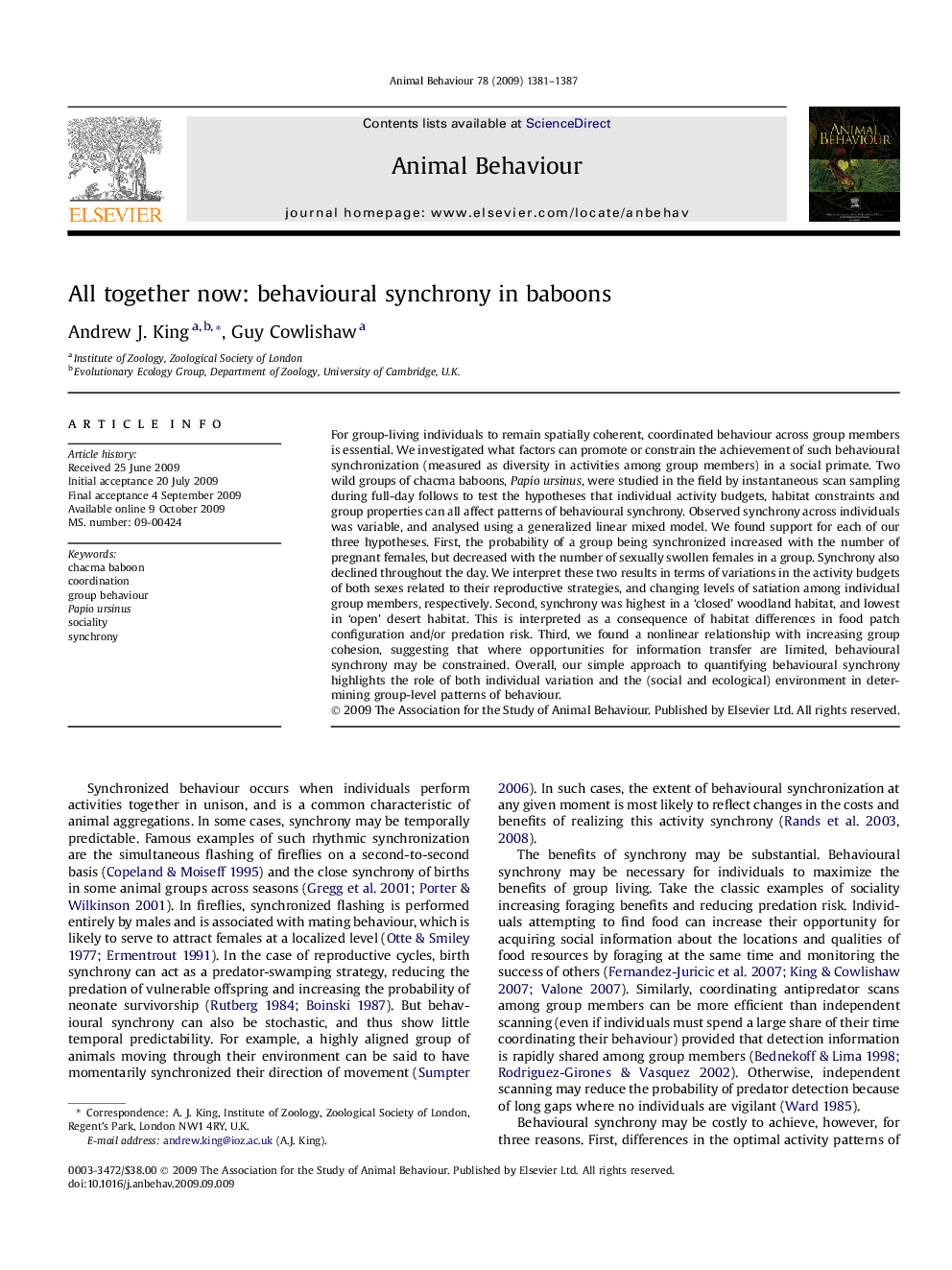| کد مقاله | کد نشریه | سال انتشار | مقاله انگلیسی | نسخه تمام متن |
|---|---|---|---|---|
| 2417550 | 1104322 | 2009 | 7 صفحه PDF | دانلود رایگان |

For group-living individuals to remain spatially coherent, coordinated behaviour across group members is essential. We investigated what factors can promote or constrain the achievement of such behavioural synchronization (measured as diversity in activities among group members) in a social primate. Two wild groups of chacma baboons, Papio ursinus, were studied in the field by instantaneous scan sampling during full-day follows to test the hypotheses that individual activity budgets, habitat constraints and group properties can all affect patterns of behavioural synchrony. Observed synchrony across individuals was variable, and analysed using a generalized linear mixed model. We found support for each of our three hypotheses. First, the probability of a group being synchronized increased with the number of pregnant females, but decreased with the number of sexually swollen females in a group. Synchrony also declined throughout the day. We interpret these two results in terms of variations in the activity budgets of both sexes related to their reproductive strategies, and changing levels of satiation among individual group members, respectively. Second, synchrony was highest in a ‘closed’ woodland habitat, and lowest in ‘open’ desert habitat. This is interpreted as a consequence of habitat differences in food patch configuration and/or predation risk. Third, we found a nonlinear relationship with increasing group cohesion, suggesting that where opportunities for information transfer are limited, behavioural synchrony may be constrained. Overall, our simple approach to quantifying behavioural synchrony highlights the role of both individual variation and the (social and ecological) environment in determining group-level patterns of behaviour.
Journal: Animal Behaviour - Volume 78, Issue 6, December 2009, Pages 1381–1387